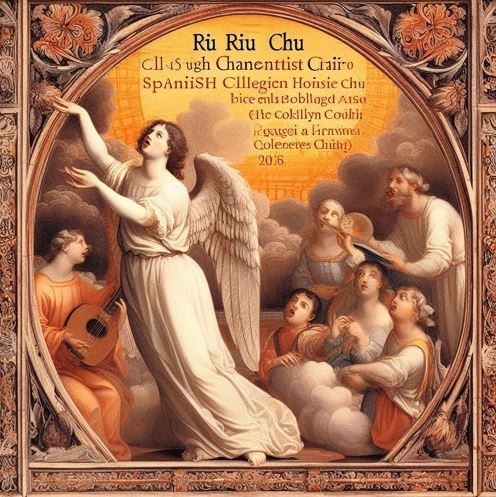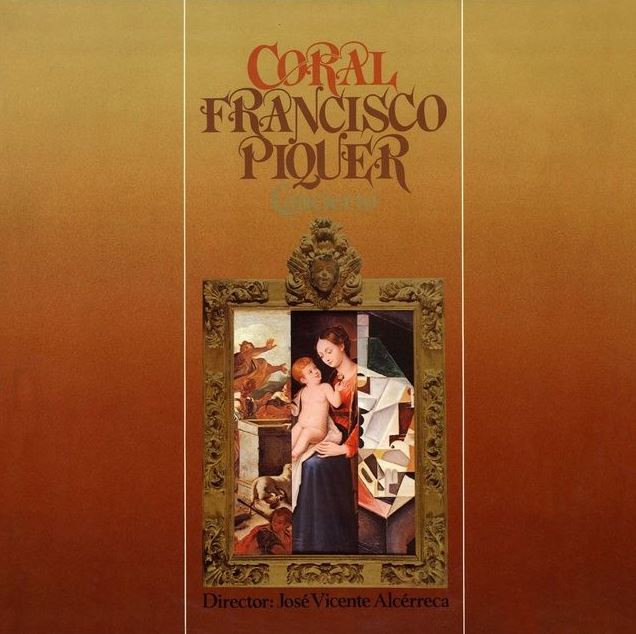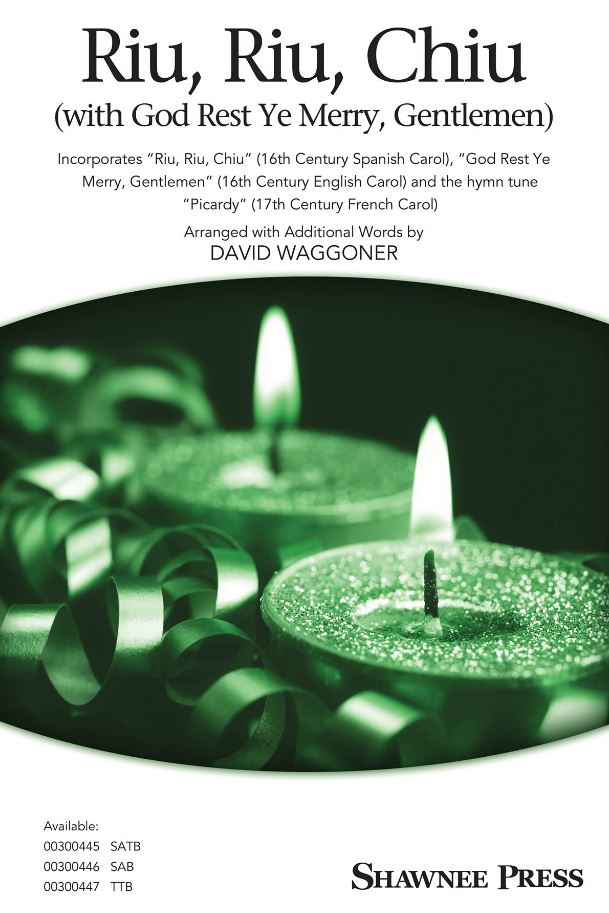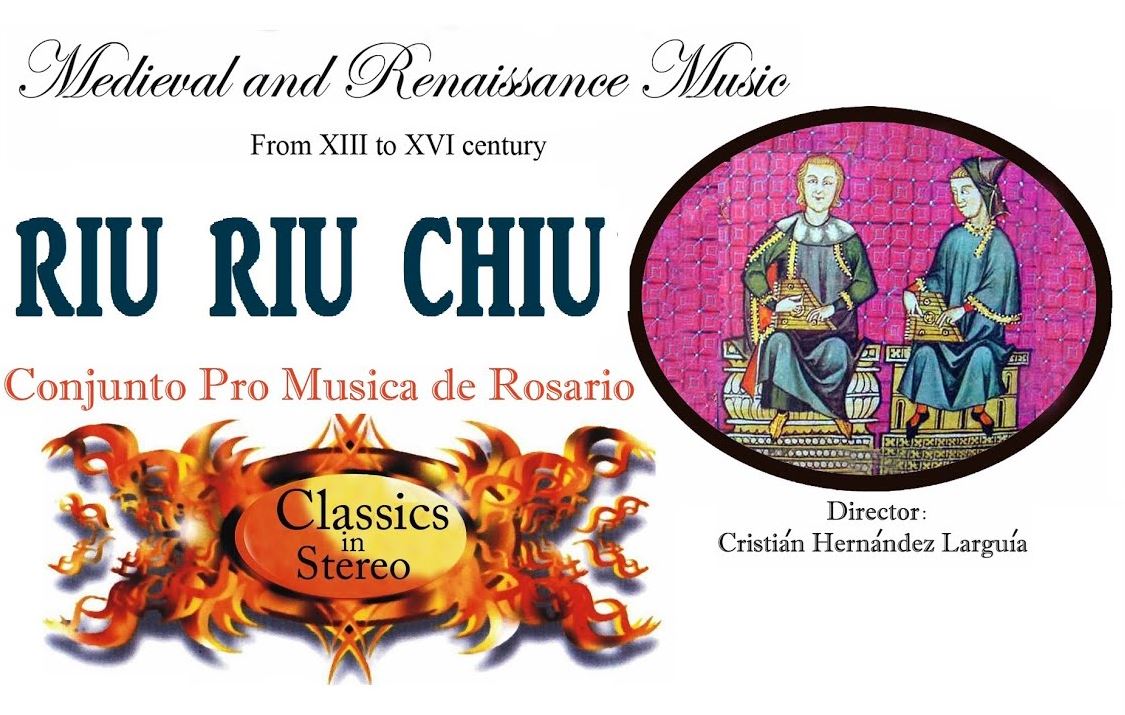Ríu Ríu Chíu A Renaissance Villancico Reborn as a Beloved
“Ríu Ríu Chíu,” a traditional Spanish villancico, has experienced a remarkable resurgence as a beloved Christmas carol in contemporary times. Originating from the Renaissance period, this piece is a vibrant testament to the rich cultural tapestry of 16th-century Spain. It is particularly noted for its inclusion in the Cancionero de Upsala, a significant collection of music published in 1556 in Venice. This anthology, named after the library at the University of Uppsala where the sole surviving copy is preserved, serves as a crucial link to understanding the musical landscape of the past.
The song itself, characterized by its catchy refrain “Ríu Ríu Chíu,” captures the essence of the era’s musical creativity and has been subject to various interpretations over the centuries. Some sources attribute the composition to Mateo Flecha the Elder, a well-known composer of the time, although others suggest it may be the work of an anonymous artist. The melody and lyrics, which include the peculiar but memorable phrase “Ríu Ríu Chíu,” believed by some to mimic the call of a nightingale, or perhaps a kingfisher, weave a narrative that is both enchanting and enigmatic.
The thematic elements of “Ríu Ríu Chíu” delve deep into the heart of Christian iconography, celebrating the Nativity of Christ and the Immaculate Conception, themes that resonate deeply during the Christmas season. This alignment with the festive spirit has helped cement its status as a seasonal favorite, allowing it to transcend its historical origins and become a staple in modern Christmas repertoires. The enduring popularity of “Ríu Ríu Chíu” underscores not only its musical beauty but also its ability to connect listeners across generations to the joy and reverence of the holiday spirit.
| Title | Ríu Ríu Chíu |
|---|---|
| Origin | 16th-century Spain, Renaissance period |
| Publication | Cancionero de Upsala, 1556 in Venice |
| Composer | Possibly Mateo Flecha the Elder or anonymous |
| Notable Phrase | “Ríu Ríu Chíu” (mimics a bird call) |
| Themes | Christian iconography, Nativity of Christ, Immaculate Conception |
| Modern Relevance | Popular Christmas carol, resonates across generations |
Contents
Origins and Historical Background
“Ríu Ríu Chíu” is enveloped in a cloud of mystery concerning its true authorship. Some musicologists attribute this captivating villancico to Mateo Flecha the Elder, a renowned composer of the Renaissance era who passed away in 1553. However, the song is also commonly listed as anonymous in various scholarly sources, adding to the intrigue surrounding its origins. Adding another layer of complexity, “Ríu Ríu Chíu” shares melodic and thematic similarities with another villancico, “Falalanlera,” composed by Bartomeu Càrceres, an Aragonese composer. This resemblance has sparked discussions regarding the influences and commonalities in the musical traditions of that period.

The villancico found its way into the broader public domain through its inclusion in the Cancionero de Upsala, a collection of music published in 1556 in Venice. The Cancionero de Upsala is significant not just for its content but also for its history; the only surviving copy of this publication is preserved in the library of the University of Uppsala, Sweden. This preservation allows contemporary scholars and musicians to connect with a piece of the Renaissance musical heritage, providing invaluable insights into the cultural and musical practices of that time.
The phrase “ríu ríu chíu” itself, often considered nonsensical, is believed to mimic the call of a bird, possibly a nightingale or a kingfisher. This interpretation aligns with the song’s pastoral and natural imagery, which was common in the villancico genre. The word “ríu,” meaning river in Catalan, also points to the geographical and linguistic context of the composer, suggesting a deeper connection to the landscapes of Catalonia or a symbolic representation of natural barriers.
| Title | Ríu Ríu Chíu |
|---|---|
| Possible Composers | Mateo Flecha the Elder, possibly Bartomeu Càrceres, or anonymous |
| Publication | Cancionero de Upsala, 1556 in Venice |
| Preservation Location | University of Uppsala Library, Sweden |
| Similar Works | Shares similarities with “Falalanlera” by Bartomeu Càrceres |
| Notable Phrase Interpretation | “Ríu Ríu Chíu” mimics a bird call, possibly a nightingale or kingfisher |
| Geographical and Linguistic Context | “Ríu” suggests a connection to Catalan landscapes or symbolic natural imagery |
| Significance | Provides insights into Renaissance musical and cultural practices |
Themes of the Song and Video Song
“Ríu Ríu Chíu” explores profound religious themes, prominently featuring the Nativity of Christ and the Immaculate Conception. The refrain, “Dios guardó el lobo de nuestra cordera,” translates to “God kept the wolf from our ewe lamb,” a metaphor for the Virgin Mary protected from sin. This theme is not only central to the song but also to the doctrine of the Immaculate Conception, which holds that Mary was born without original sin.

The lyrics of “Ríu Ríu Chíu” weave a narrative that celebrates the Incarnation, a cornerstone of Christian theology that professes God becoming flesh in the person of Jesus Christ. This theme is explicitly mentioned in lines that speak of Christ as the ‘Great Monarch’ and ‘Patriarch,’ cloaked in flesh to redeem humanity. These elements make “Ríu Ríu Chíu” particularly resonant during the Christmas season, as they echo the fundamental messages of hope, redemption, and divine love.
A deeper analysis of the lyrics reveals a rich tapestry of theological and symbolic significance. For instance, the line “El lobo rabioso la quiso morder, Mas Dios Poderoso la supo defender” portrays a vivid struggle between good and evil, with divine intervention protecting purity and innocence. This portrayal not only enriches the song’s narrative but also enhances its emotional and spiritual appeal during performances, particularly in the context of Christmas, a time characterized by reflection on such themes.
The combination of historical mystique, rich thematic content, and melodious allure has cemented “Ríu Ríu Chíu” as a favorite among both traditional and contemporary audiences. Its ability to convey deep religious sentiment while maintaining a lively, engaging composition explains its enduring popularity and its revered status in the repertoire of Christmas music.
| Title | Ríu Ríu Chíu |
|---|---|
| Possible Composers | Mateo Flecha the Elder, possibly Bartomeu Càrceres, or anonymous |
| Publication | Cancionero de Upsala, 1556 in Venice |
| Preservation Location | University of Uppsala Library, Sweden |
| Similar Works | Shares similarities with “Falalanlera” by Bartomeu Càrceres |
| Notable Phrase Interpretation | “Ríu Ríu Chíu” mimics a bird call, possibly a nightingale or kingfisher |
| Geographical and Linguistic Context | “Ríu” suggests a connection to Catalan landscapes or symbolic natural imagery |
| Themes | Christian iconography, Nativity of Christ, Immaculate Conception |
| Refrain Translation | “Dios guardó el lobo de nuestra cordera” – “God kept the wolf from our ewe lamb” |
| Religious Significance | Celebrates the Incarnation and portrays a struggle between good and evil with divine intervention |
| Modern Relevance | Popular Christmas carol, resonates across generations |
| Emotional and Spiritual Appeal | Deep religious sentiment, lively composition |
Performances and Cultural Impact
“Ríu Ríu Chíu” has been a staple in the repertoires of classical and early music ensembles, with performances that span several decades and continents. The Boston Camerata, renowned for their interpretations of early music, has presented this villancico in a manner that emphasizes its historical and cultural roots, often using authentic instruments and arrangements that echo the Renaissance period. Similarly, the Oxford Camerata, an ensemble noted for their scholarly approach to music, has included “Ríu Ríu Chíu” in their performances, adding a touch of academic rigor and polished vocal artistry.

In a more contemporary vein, the song reached a broader audience through its unexpected adoption by The Monkees, a popular rock band from the 1960s. Their performance of “Ríu Ríu Chíu” on a Christmas television episode in 1967 introduced the traditional Spanish carol to millions of viewers, many of whom were hearing it for the first time. This rendition was later included on various compilation albums and even featured on their 2018 album, Christmas Party. The Monkees’ version, characterized by its folksy simplicity and charming harmonies, played a significant role in popularizing the carol beyond its usual classical and liturgical audiences.

Over the years, “Ríu Ríu Chíu” has been included in numerous albums and performed in diverse settings, illustrating its versatility and universal appeal. It has appeared on traditional Christmas albums like Our Heart’s Joy: A Chanticleer Christmas and more eclectic collections such as Bruce Cockburn’s Christmas, where each rendition brings out a different facet of the song’s character. Whether arranged for a cappella voices or accompanied by a full orchestra, “Ríu Ríu Chíu” manages to retain its distinctive charm and spiritual depth.
Moreover, the song has been featured in traditional church services, most notably in the “Nine Lessons and Carols” broadcast from King’s College, Cambridge. This service, which is listened to by millions around the world, has helped cement “Ríu Ríu Chíu” in the canon of essential Christmas music, showcasing its liturgical significance and its ability to convey the solemnity and joy of the Christmas message.
| Title | Ríu Ríu Chíu |
|---|---|
| Possible Composers | Mateo Flecha the Elder, possibly Bartomeu Càrceres, or anonymous |
| Publication | Cancionero de Upsala, 1556 in Venice |
| Preservation Location | University of Uppsala Library, Sweden |
| Similar Works | Shares similarities with “Falalanlera” by Bartomeu Càrceres |
| Notable Phrase Interpretation | “Ríu Ríu Chíu” mimics a bird call, possibly a nightingale or kingfisher |
| Geographical and Linguistic Context | “Ríu” suggests a connection to Catalan landscapes or symbolic natural imagery |
| Themes | Christian iconography, Nativity of Christ, Immaculate Conception |
| Refrain Translation | “Dios guardó el lobo de nuestra cordera” – “God kept the wolf from our ewe lamb” |
| Religious Significance | Celebrates the Incarnation and portrays a struggle between good and evil with divine intervention |
| Modern Relevance | Popular Christmas carol, resonates across generations |
| Emotional and Spiritual Appeal | Deep religious sentiment, lively composition |
| Classical Performances | Boston Camerata, Oxford Camerata |
| Popular Adaptation | The Monkees (1967 Christmas episode and subsequent albums) |
| Album Inclusions | Our Heart’s Joy: A Chanticleer Christmas, Bruce Cockburn’s Christmas |
| Church Services | “Nine Lessons and Carols” broadcast from King’s College, Cambridge |
The enduring appeal of “Ríu Ríu Chíu” lies in its remarkable ability to bridge traditional Renaissance music with contemporary Christmas celebrations. Its lively rhythms and memorable chorus have captivated listeners for centuries, while its deep religious themes offer a reflective pause during the festive season. The song’s ability to resonate across cultures and eras is a testament to its universality and timeless appeal.
Through its varied interpretations, “Ríu Ríu Chíu” has traversed musical genres and influenced artists across the globe, enriching the musical landscape of Christmas and highlighting the shared human experience of music as a carrier of tradition and emotion. Its legacy is not only preserved in the recordings and performances of classical and modern artists but also in the hearts of listeners who find joy and solace in its melodies each Christmas season. As “Ríu Ríu Chíu” continues to be sung and celebrated, it remains a vibrant link to the past, a joyous part of present celebrations, and a cherished inheritance for future generations.
Knowledge -Corporate Influence in Thank You for Smoking
Exploring Magdalena de Kino A Gem in Sonora, Mexico
The Storied Career of Frédéric Déhu From Lens to Barcelona
Pearl of the Orient A Journey Through History and Culture
The Diverse World of Physalis Peruviana A Comprehensive Guide
The Cassese Legacy Tracing the Impact of a Distinguished
Career of Gustavo Matosas From Midfielder to Manager
